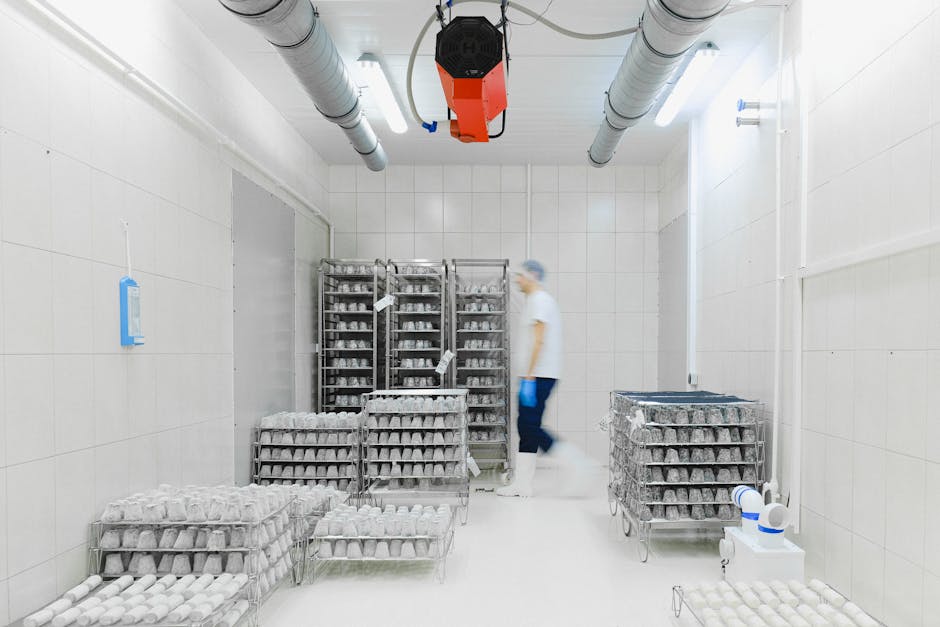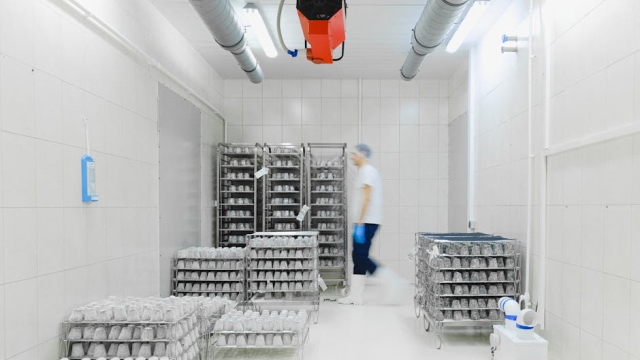
In various industries, maintaining specific temperature conditions is crucial for product quality and safety. This is where industrial ice systems play a vital role. These systems are designed to produce and distribute ice for a wide range of applications, from food preservation to temperature control in industrial processes. Understanding how these systems work, their features, and their benefits can help businesses make informed decisions on the best solutions for their needs.
Overview of Industrial Ice Systems and Their Applications
Industrial ice systems encompass a variety of equipment and technologies designed to generate ice in large quantities. These systems are essential in sectors such as food processing, pharmaceuticals, and construction. For example, in the food industry, ice is used to keep seafood fresh during transportation, while in pharmaceuticals, it is crucial for the storage of temperature-sensitive products. Additionally, construction companies utilize ice to cool concrete, ensuring proper setting times and preventing cracking.
There are several types of industrial ice systems available, including flake ice machines, block ice machines, and tube ice machines. Each type serves specific needs; flake ice is often preferred for its quick cooling properties and ease of use, while block ice is favored for its longer melting time. Tube ice, on the other hand, is ideal for applications requiring a slower cooling rate, such as in certain beverage processing operations.
Key Features to Consider When Choosing an Industrial Ice System
When selecting an industrial ice system, several key features should be evaluated to ensure it meets operational requirements. These include:
Capacity
The capacity of an ice system is one of the most critical factors to consider. It should align with the production needs of the business. Systems are available in various sizes, and understanding the volume of ice required on a daily basis will help in choosing the right model.
Efficiency
Efficiency is another essential aspect. An efficient industrial ice system not only produces ice quickly but also consumes less energy, which can lead to significant cost savings over time. Look for systems that employ advanced technologies to optimize energy use while maintaining high output levels.
Maintenance
Regular maintenance is crucial for the longevity and performance of industrial ice systems. Consider systems with user-friendly designs that allow for easy access to components, facilitating routine checks and cleaning. Manufacturers that provide comprehensive support and service agreements can also contribute to minimizing downtime.
Benefits of Industrial Ice Systems in Cold Chain Management
The significance of industrial ice systems extends beyond mere ice production; they are integral to effective cold chain management. A well-maintained industrial ice system enhances product quality and safety by ensuring that perishable goods remain at optimal temperatures throughout storage and transportation. This is particularly vital in the food and pharmaceutical industries, where temperature control directly impacts product integrity.
Moreover, industrial ice systems help reduce spoilage and waste, leading to improved profitability. By maintaining the freshness of products, businesses can enhance customer satisfaction and loyalty. Additionally, these systems often contribute to regulatory compliance, as many industries are subject to strict guidelines regarding product storage and transport temperatures.
In conclusion, industrial ice systems are essential tools for a variety of sectors, ensuring that products are stored and transported safely. By understanding the different types of systems available and considering key features such as capacity, efficiency, and maintenance, businesses can select the most appropriate solution for their needs. The benefits of these systems, particularly in cold chain management, further underscore their importance in maintaining high standards of product quality and safety. For more information on industrial ice systems and their applications, you can explore resources available at CNIC Esta.
